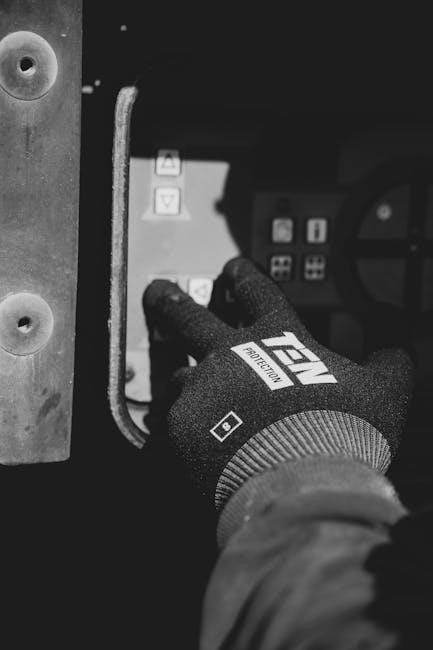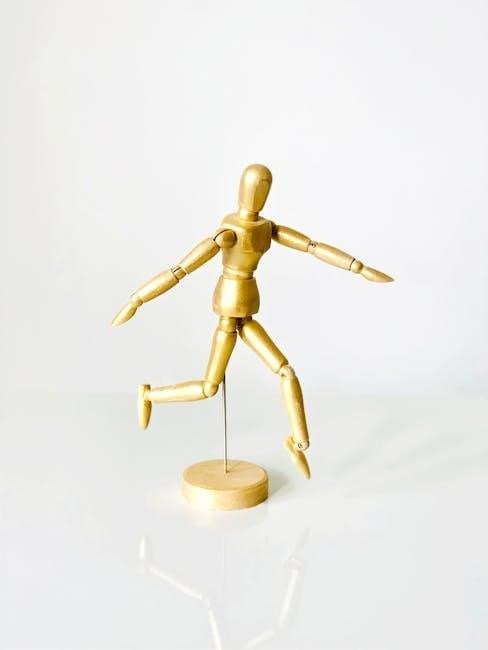VTech Answering Machine Manual: A Comprehensive Guide
This guide provides detailed instructions for setting up and using your VTech answering machine, covering everything from initial setup to advanced features and troubleshooting.
Access VTech support at www.vtechphones.com, or authorized VTech service centers for assistance with your answering system settings and more.
Understanding Your VTech Answering Machine
Your VTech answering machine is designed for convenient call management, offering features like message recording, call screening, and customizable greetings. It integrates seamlessly with your VTech cordless phone system, providing a unified communication experience.

The system operates using indicator lights to signal incoming calls, new messages, or system status. Proper time and date settings are crucial for accurate message timestamps. You can access the answering system settings through the menu, activated by pressing the MENU button on your handset.
Understanding the interplay between the handset and the base unit is key. The base unit houses the answering machine functionality, while the handset allows for remote access and control. Refer to your model’s specific instructions for detailed operation.
Remember to register your phone at www.vtechphones.com.
Identifying Your VTech Model
VTech produces a diverse range of answering machines integrated with cordless phone systems. Correctly identifying your specific model is crucial for accessing the appropriate user manual and support resources. Model numbers are typically located on the underside of the base unit or on the original packaging.
Common models include the CS2050, and variations within series. Each model may have unique features and operational procedures. Knowing your model ensures you’re following the correct instructions for tasks like setting the date and time, recording greetings, or adjusting volume levels.
Visit www.vtechphones.com and use the search function, entering your model number to download the dedicated user manual. This manual contains detailed diagrams and step-by-step guides tailored to your specific VTech device.
Proper identification streamlines troubleshooting and maximizes functionality.
Initial Setup and Registration
Upon unboxing your VTech answering machine, connect the power adapter and ensure a stable phone line connection; Before fully utilizing the system, registering your phone is highly recommended. This process, done via www.vtechphones.com, unlocks access to enhanced support, product updates, and warranty services.
Registration typically requires the model number and serial number, found on the device’s underside. Follow the on-screen prompts during the online registration process. This step also allows VTech to notify you of important firmware updates or potential service alerts.
Proper setup ensures optimal performance and access to valuable resources. Refer to your model’s specific manual for detailed connection diagrams and registration guidance.
Registering your device is a simple step with long-term benefits.
Setting the Date and Time
Accurate date and time settings are crucial for correct message timestamps and overall answering system functionality. To set the date and time on your VTech unit, press the ‘MENU’ button. Navigate through the menu options using the directional keys until you reach the ‘Date & Time’ setting.
You’ll typically be prompted to enter the month, day, and year, followed by the hour and minute. Confirm each entry using the ‘OK’ or ‘#’ key. Ensure you select the correct AM or PM designation.
A correctly configured date and time allows you to accurately track when messages were received, aiding in call management and organization. Refer to your specific model’s manual for precise button sequences.
Proper time setting is essential for reliable operation.
Recording Your Greeting
Personalizing your greeting is a key step in setting up your VTech answering machine. To begin recording, press the ‘MENU’ button and navigate to the ‘Greeting’ option. Select ‘Record Greeting’ and follow the prompts. You’ll hear a tone indicating when to start speaking.
Speak clearly and concisely, stating your name or a brief message. Once finished, press ‘Stop’ or the designated key to save the recording. You can preview your greeting to ensure it sounds correct.
Consider recording different greetings for various situations, such as when you’re unavailable or on vacation. A professional greeting enhances the caller experience.
Remember to speak slowly and clearly for optimal recording quality.
Basic Answering Machine Operations
Understanding the fundamental operations of your VTech answering machine ensures seamless message management. To turn the answering system on or off, press the ‘ANS MACHINE’ key, often labeled ‘g p/q g’. A lit indicator confirms activation.
To play messages, press the ‘PLAY’ button. The machine will automatically sequence through new and saved messages. Use the ‘FAST FORWARD’ and ‘REWIND’ buttons to navigate. To delete messages individually, press ‘DELETE’ during playback.
For bulk deletion, consult your specific model’s manual. Regularly check and manage messages to prevent storage overflow.
Familiarize yourself with these basic functions for efficient call handling.
Turning the Answering System On/Off

Controlling whether your VTech answering machine answers calls is straightforward. Typically, the ‘ANS MACHINE’ key – often denoted as ‘g p/q g’ on the handset – manages this function. A single press toggles the system between answering and non-answering modes.
When the answering system is active, an indicator light will illuminate, confirming it’s ready to record messages. Conversely, when deactivated, the light will be off. Ensure the system is on when you anticipate being unavailable to answer calls personally.
Remember to check the indicator light to verify the current status. This simple operation provides essential control over your call management.
Playing Messages
To access recorded messages on your VTech answering machine, typically you’ll press the ‘PLAY’ or ‘MESSAGE’ key on either the base unit or the handset. The system will then begin playing the oldest message first, unless a different playback order is selected.
Volume control allows you to adjust the playback level for clear listening. During playback, keys like ‘FAST FORWARD’ and ‘REWIND’ enable you to navigate between messages efficiently. Some models feature a ‘SKIP’ function to jump directly to the next message.
Pay attention to the indicator lights, which often signal new or listened-to messages. Familiarize yourself with your specific model’s controls for optimal message retrieval.
Deleting Messages
Removing unwanted messages from your VTech answering machine is straightforward. While a message is playing, or after it finishes, press the ‘DELETE’ key. Confirm the deletion if prompted, as this action is usually irreversible.
To delete all messages at once, locate the ‘DELETE ALL’ function – often accessed by pressing and holding the ‘DELETE’ key for a few seconds. Exercise caution when using this feature, as all stored messages will be permanently erased.
Regularly deleting old messages frees up memory for new recordings. Refer to your model’s specific instructions for detailed steps and any unique deletion options available on your VTech system.
Advanced Features and Settings
Your VTech answering machine offers several customizable settings to enhance its functionality. Adjusting volume levels allows you to control playback and recording loudness for optimal clarity. You can also modify the number of rings before answering, tailoring the system to your preferences and avoiding interruptions during calls.
Call screening, if supported by your model, lets you listen to incoming calls before deciding whether to answer. Explore the answering system settings menu – accessed via the ‘MENU’ key – to configure these features. Detailed instructions are available starting on page 37 of the full manual.
Adjusting Volume Levels
VTech allows precise control over your answering machine’s audio output. To adjust playback volume, navigate through the answering system settings using the handset. You can typically increase or decrease the volume using the volume control buttons on the phone itself, often indicated by “+” and “-” symbols.
Recording volume can also be adjusted, ensuring clear message capture. Experiment with different settings to find the optimal balance between loudness and clarity. Refer to your specific model’s manual for detailed instructions, as button locations and menu options may vary. Proper volume adjustment enhances both listening and recording experiences.

Changing the Number of Rings Before Answering
VTech phones offer customizable settings for how long the phone rings before the answering machine activates. Access the answering system settings via the handset’s menu – typically by pressing the “MENU” button. Locate the option related to “rings before answer” or a similar phrase.
You can then select the desired number of rings, ranging from a few to a maximum value. A higher number allows more time for callers to reach you directly, while a lower number quickly directs calls to voicemail. Adjust this setting based on your preferences and typical call volume. Consult your model’s manual for precise steps.
Using Call Screening
VTech call screening allows you to hear the caller’s voice before deciding whether to answer. This feature is typically activated within the answering system settings, accessible through the handset’s menu. Look for an option labeled “Call Screening” or “Announce Calls.”
When enabled, incoming callers will be prompted to announce their name and reason for calling, which you’ll hear through the handset speaker. You can then press a designated key (often the “Talk” button) to answer the call or ignore it to send it directly to voicemail. This provides added control and privacy, filtering unwanted calls effectively.
Troubleshooting Common Issues
Common problems with your VTech answering machine can often be resolved with simple checks. If the machine has no power, ensure it’s properly connected to a working electrical outlet. For poor recording quality, adjust the recording volume within the answering system settings.
If messages aren’t recording, verify the memory isn’t full and that the answering system is turned on. Compatibility issues with fax machines can sometimes occur; consult your fax machine’s documentation. If problems persist, visit www.vtechphones.com or contact VTech customer support for further assistance and potential service center locations.

No Power/Machine Not Turning On
If your VTech answering machine isn’t powering on, begin with the basics. First, confirm the power adapter is securely plugged into both the machine and a functioning electrical outlet. Test the outlet with another device to rule out an outlet issue.
Inspect the power adapter cord for any visible damage, such as cuts or fraying. If the adapter is damaged, it needs replacement. Ensure the battery backup (if applicable) is correctly installed. If the issue persists after these checks, contact VTech customer support or visit an authorized VTech product service center.
Poor Recording Quality
Experiencing muffled or distorted recordings on your VTech answering machine? First, check the microphone location on the base unit; ensure it isn’t obstructed. Adjust the recording volume level within the answering system settings – a higher setting might improve clarity, but avoid excessive levels causing distortion.
Consider the distance between the caller and their phone; a weak signal can impact recording quality. If using a cordless handset, ensure it’s within range of the base unit. If problems continue, consult your fax machine documentation for potential compatibility issues. Contact VTech support for further assistance.
Messages Not Recording
If your VTech answering machine isn’t recording messages, verify the system is turned ‘On’. Confirm sufficient memory isn’t full; delete old messages to create space. Ensure the tape counter (if applicable) isn’t at the end of the tape. Check the battery backup; a low battery can sometimes cause recording failures.
Also, confirm the number of rings before answering isn’t set too high, potentially causing callers to hang up before the recording begins. If the issue persists, consult the answering system settings within the user manual or visit www.vtechphones.com for troubleshooting steps and support.
Understanding Indicator Lights
Your VTech answering machine utilizes indicator lights to communicate its status. A flashing light during an incoming call signifies an active connection or line usage by another phone. A solid light when the handset is in use, or the answering system is active, indicates operation.
Specific lights may indicate new messages, battery status, or system errors. Refer to your model’s user manual for a detailed explanation of each light’s meaning. Understanding these indicators helps diagnose issues quickly and ensures optimal performance of your VTech cordless phone and its answering machine features.
Compatibility with Fax Machines
Ensuring compatibility between your VTech answering machine and a fax machine is crucial for reliable operation. If you experience issues receiving faxes, consult your fax machine’s documentation for specific settings related to compatibility with answering systems.
Some fax machines require adjustments to properly interact with an answering machine. If problems persist, contact VTech product service centers for assistance. They can provide guidance on optimal settings and configurations to ensure seamless communication between your VTech phone and fax equipment, avoiding transmission errors;
RBRC Program and Recycling

VTech is committed to environmental responsibility through participation in the Rechargeable Battery Recycling Corporation (RBRC) program. This initiative provides a convenient way to recycle rechargeable batteries used in your VTech cordless phone and answering machine.
To responsibly dispose of your old batteries, please visit www.rbrc.org or contact your local VTech product service centers for drop-off locations; Proper recycling helps conserve natural resources and prevents harmful materials from entering landfills. VTech encourages all users to participate in this important environmental effort.
Accessing the Full User Manual Online
For a comprehensive and detailed version of your VTech answering machine user manual, visit the official VTech website at www.vtechphones.com. There, you can find downloadable PDF versions of manuals for various VTech models, including specific instructions for your cordless phone and answering system.
The online manual offers expanded explanations, troubleshooting tips, and visual aids to help you maximize the functionality of your device. You’ll find detailed guidance on setting up the date and time, recording greetings, and managing messages. Accessing the full manual online ensures you have the most up-to-date information.

VTech Customer Support and Service Centers
If you require further assistance with your VTech answering machine beyond the user manual, VTech offers comprehensive customer support options. Visit their official website at www.vtechphones.com to access a wealth of resources, including FAQs, troubleshooting guides, and downloadable manuals.

For personalized support, you can contact VTech’s customer service team directly. Additionally, VTech maintains a network of authorized product service centers where you can receive expert repair and assistance. These centers can help with any issues related to your answering system or cordless phone, ensuring optimal performance.

Frequently Asked Questions (FAQ)
Q: How do I set up my VTech answering machine? A: Begin by registering your phone at www.vtechphones.com. Then, follow the instructions in the manual to set the date and time, and record your greeting.

Q: Why is my recording quality poor? A: Ensure the microphone isn’t obstructed and adjust the volume levels. Q: My machine isn’t recording messages, what should I do? A: Check the memory is not full and the system is turned on. For fax compatibility, consult your fax machine’s documentation and VTech service centers.
Safety Information and Warnings
Important Safety Instructions: To reduce the risk of fire, electric shock, or injury, always follow these guidelines. Do not use the device near water or expose it to extreme temperatures. Only use the provided power adapter; incorrect voltage can damage the unit.
Avoid disassembling the answering machine beyond what is described in this manual, as unauthorized repairs can be hazardous. Ensure the device is placed on a stable surface and keep it away from obstructions. If you experience issues, consult VTech customer support or authorized service centers for assistance and recycling information through the RBRC program.
Important Safety Instructions
Caution: To minimize risks, adhere to these crucial safety guidelines. Avoid using the VTech answering machine during thunderstorms. Do not open the casing beyond specified instructions, as this could expose you to dangerous voltages or components.
Use only the supplied power adapter with the correct voltage. Improper use can lead to fire or electric shock. Keep the device dry and away from liquids. If the unit malfunctions, disconnect it immediately and contact VTech support or authorized service centers. Proper disposal through the RBRC program is encouraged for environmental responsibility.


















































